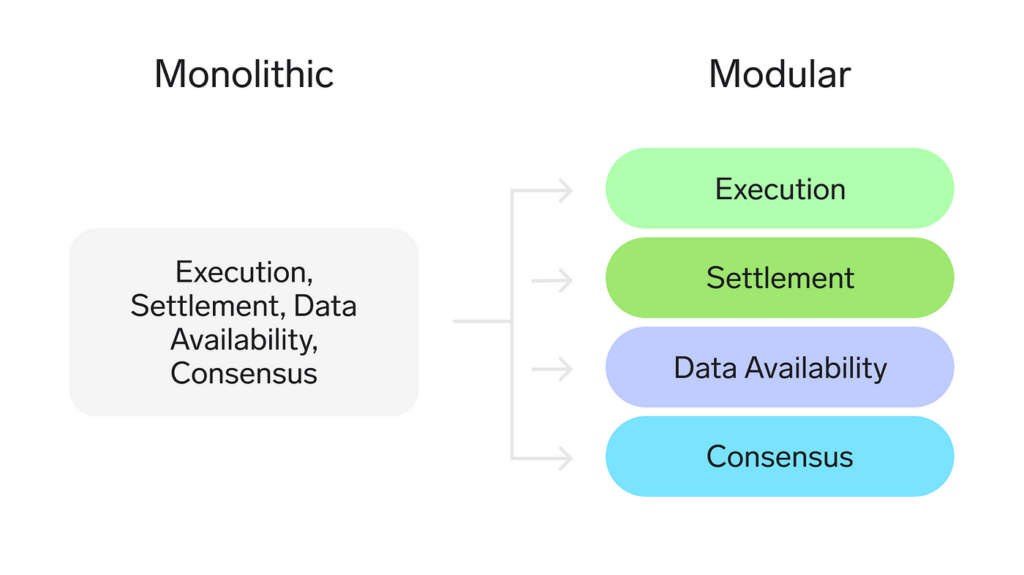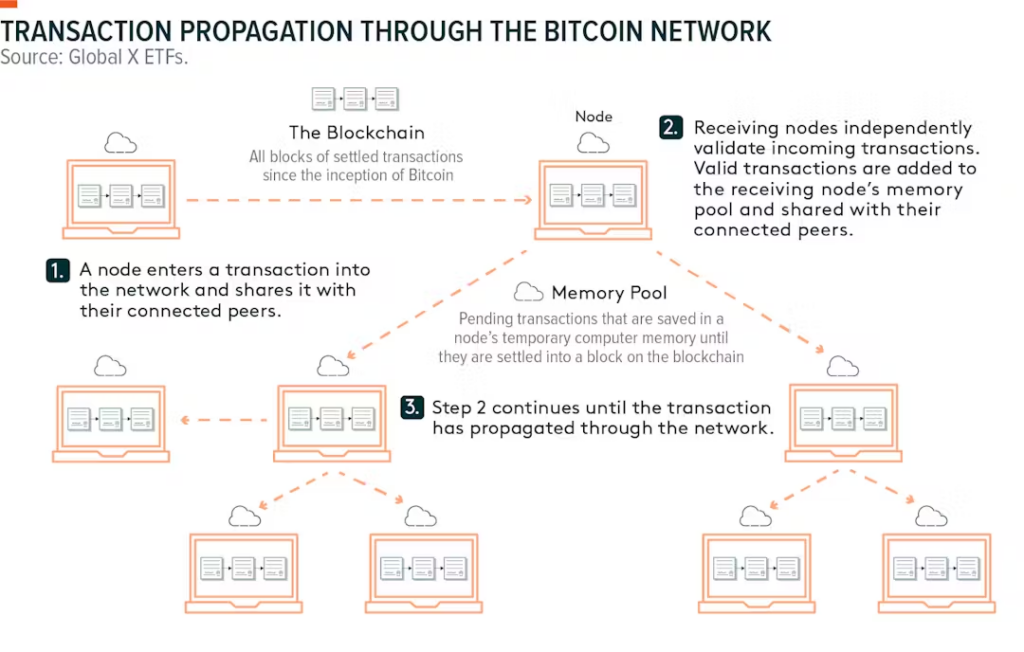Why is Data Availability (DA) in Crypto and Blockchain Important?
Apr. 15, 2024. 6 min. read.
13 Interactions
Werner V. explores the essence of blockchain: data! He explains topics related to data on blockchain, addressing structure, availability, challenges, and emerging solutions.
Introduction
The digital world’s driven by data, whether in Web2 or Web3. It’s no different in the cryptocurrency and blockchain sector. Gigantic new decentralized networks are spinning up and getting new layers of chain – and data availability is crucial to their integrity, security, and functionality.
With the technology evolving at a breakneck pace, understanding data availability and its implications is key to understanding the future of cryptocurrency applications. New innovations, like data sharding and sampling, are making it cheaper and more effective to ensure reliable DA and data storage than ever before. And the DA space is only going to get more competitive from here on, with ‘modular’ chains like Celestia, which are divided into specific layers dedicated to specific tasks.
In this blog post, we will explore the concept of data availability, its challenges, and the innovative solutions being developed to address them.
What is Data Availability (DA)?
Data availability can be defined as the state when all transaction-related data is accessible to nodes on the blockchain network. For a trustless network to function, it is essential that nodes can verify transactions and compute the blockchain’s state independently. When block producers propose new blocks, they must make all data within the block, including transaction data, available for others to see and verify.
It can get quite complicated. Let’s look at the top two chains in the world and how they handle DA.
First up is Bitcoin:
Now, let’s take a look at Ethereum, and how its shard chains distribute data:

The Importance of Data Availability
Data availability is crucial for several reasons:
1. It maintains the integrity of the ledger: once data is recorded by all nodes, it is challenging to alter, ensuring the ledger’s immutability.
2. Decentralization: with multiple nodes storing copies of the ledger, data availability ensures that all nodes have access to the same data, maintaining consensus and preventing central points of failure.
3. Transparency and auditability: data availability means all participants can verify data and transactions stored on the blockchain, fostering trust among users.
4. Resilience: by distributing data across multiple nodes, the blockchain becomes more resilient to attacks or failures.
Challenges of Data Availability
While data availability is essential for the proper functioning of blockchains, it also presents some challenges:
1. Reduced throughput: requiring nodes to download and verify data reduces the overall throughput of the blockchain.
2. Increased storage requirements: as the blockchain grows, the amount of data that needs to be stored by nodes increases, leading to higher hardware requirements.
3. Centralization risk: as hardware requirements increase, fewer individuals may be willing to run nodes, potentially pushing out small operations and leaving only large orgs running nodes.
Data Availability in Blockchain Scaling Solutions
To address the challenges of scaling while maintaining data availability, various solutions have been proposed:
Rollups and Data Availability
Rollups are a layer-2 scaling solution that executes transactions off-chain before compressing and posting them in batches to the base layer. There are two main types of rollups:
1. Optimistic rollups: These use economic incentives to guarantee data availability, relying on fraud-proofs to prevent invalid state transitions.
2. Zero-knowledge rollups (ZKR): ZKRs guarantee data availability using cryptographic proofs to check transactions are valid without revealing sensitive information.
Sharding and Data Availability
Sharding involves splitting the blockchain network into multiple sub-chains (shards) that operate in parallel. Ethereum’s future scalability plans include data sharding, where nodes only store data posted in their assigned shard. This reduces the storage requirements for individual nodes while maintaining data availability across the network.
Monolithic vs. Modular Blockchains for Data Availability

As networks scale, the architecture of your network is becoming increasingly important, and the arrival of modular chains like Celestia is making even Vitalik Buterin nervous.
Monolithic blockchains handle all aspects of the blockchain in one layer – including execution, consensus, and data availability. While this approach ensures high data availability, it can limit scalability and decentralization due to the increased storage and computational requirements for nodes.
In contrast, modular blockchains separate the blockchain’s functions into distinct layers, allowing for specialization and optimization. In this architecture, a dedicated data availability layer focuses on storing and providing access to data, enabling other layers to scale more efficiently.
Innovations in Data Availability
Several innovations have been proposed to improve data availability and overcome its challenges:
Data Availability Sampling (DAS)
DAS involves randomly selecting nodes to store a subset of the data on the blockchain. This reduces the resources required to store data while maintaining its availability. DAS is often used in conjunction with erasure coding, where data is encoded with redundant data pieces, and stored across different nodes, to ensure recoverability even if some data is lost.
Data Availability Layers
In modular blockchain architectures, data availability layers are dedicated to the task of ensuring data availability. These layers can be on-chain or off-chain and focus solely on storing and providing access to data, leaving other layers free to specialize in tasks like execution or consensus.
Danksharding and Proto-Danksharding
Danksharding is a sharding architecture that utilizes binary large objects (BLOBs) for efficient data storage. It aims to increase decentralization, provide additional security, and mitigate the risks of MEV (Maximal Extractable Value). Proto-danksharding was added to Ethereum when the recent Dencun upgrade implemented EIP4884. Proto-danksharding is a step on Ethereum’s roadmap towards complete sharding, introducing a new transaction format called BLOB-carrying transactions.

Five Projects Utilizing Data Availability Solutions
Ethereum is actively implementing sharding as part of the Ethereum 2.0 roadmap. This sharding will split the Ethereum network into 64 shard chains for processing transactions and storing data, reducing storage requirements for nodes while prioritizing and ensuring data availability. However, it’s getting competition from others. Here are a few leading projects that incorporate data availability solutions in their architectures.
- Celestia:
- Modular blockchain architecture separating consensus, execution, and data availability layers
- Focuses on providing a decentralized data availability layer for other blockchains to build on top of it
- Enables scalable and interoperable blockchain solutions without compromising security or decentralization.
- Filecoin:
- Decentralized storage network using blockchain for secure and efficient data storage
- Utilizes ‘Proof-of-Spacetime’ consensus mechanism to incentivize storage providers
- Ensures data availability with cryptographic proofs and a decentralized network of storage providers, allowing users to retrieve data on-demand
- NEAR Protocol:
- Scalable blockchain platform using sharding to increase throughput and decrease latency
- Ensures data availability through erasure coding and the Doomslug consensus mechanism
- Enables parallel processing of transactions while maintaining data availability
- Introduces ‘chunks’ for better load balancing and adaptability
- EigenDA:
- Data availability service for high-throughput decentralized operation on Ethereum rollups
- Uses EigenLayer restaking primitives for secure and scalable infrastructure
- Employs erasure coding and KZG commitments to efficiently store and retrieve data
- Aims to reduce costs through a shared security model and minimized storage requirements
- Avail:
- Avail is a data availability layer to improve scaling and interoperability in Web3
- Serves as base layer for trust-minimized applications and sovereign rollups
- Utilizes validity proofs, erasure coding, and KZG Polynomial commitments
- Ensures immediate and reliable data availability for efficient rollup operation
Conclusion
Data availability is a fundamental aspect of blockchain technology. Without it, we can’t trust in the integrity, security, and functionality of decentralized systems. As the demand for scalability and efficiency grows, innovative solutions such as rollups, sharding, data availability sampling, and dedicated data availability layers are being developed to address the unique challenges associated with data availability. It is likely that the best blockchains for DA will thrive in the coming years.
Let us know your thoughts! Sign up for a Mindplex account now, join our Telegram, or follow us on Twitter.

.png)

.png)


.png)






4 Comments
4 thoughts on “Why is Data Availability (DA) in Crypto and Blockchain Important? ”
Very informative article!!
🟨 😴 😡 ❌ 🤮 💩
Lean7d
10 days ago 1 MPXR
🟨 😴 😡 ❌ 🤮 💩
nicce
🟨 😴 😡 ❌ 🤮 💩
interesting!
🟨 😴 😡 ❌ 🤮 💩